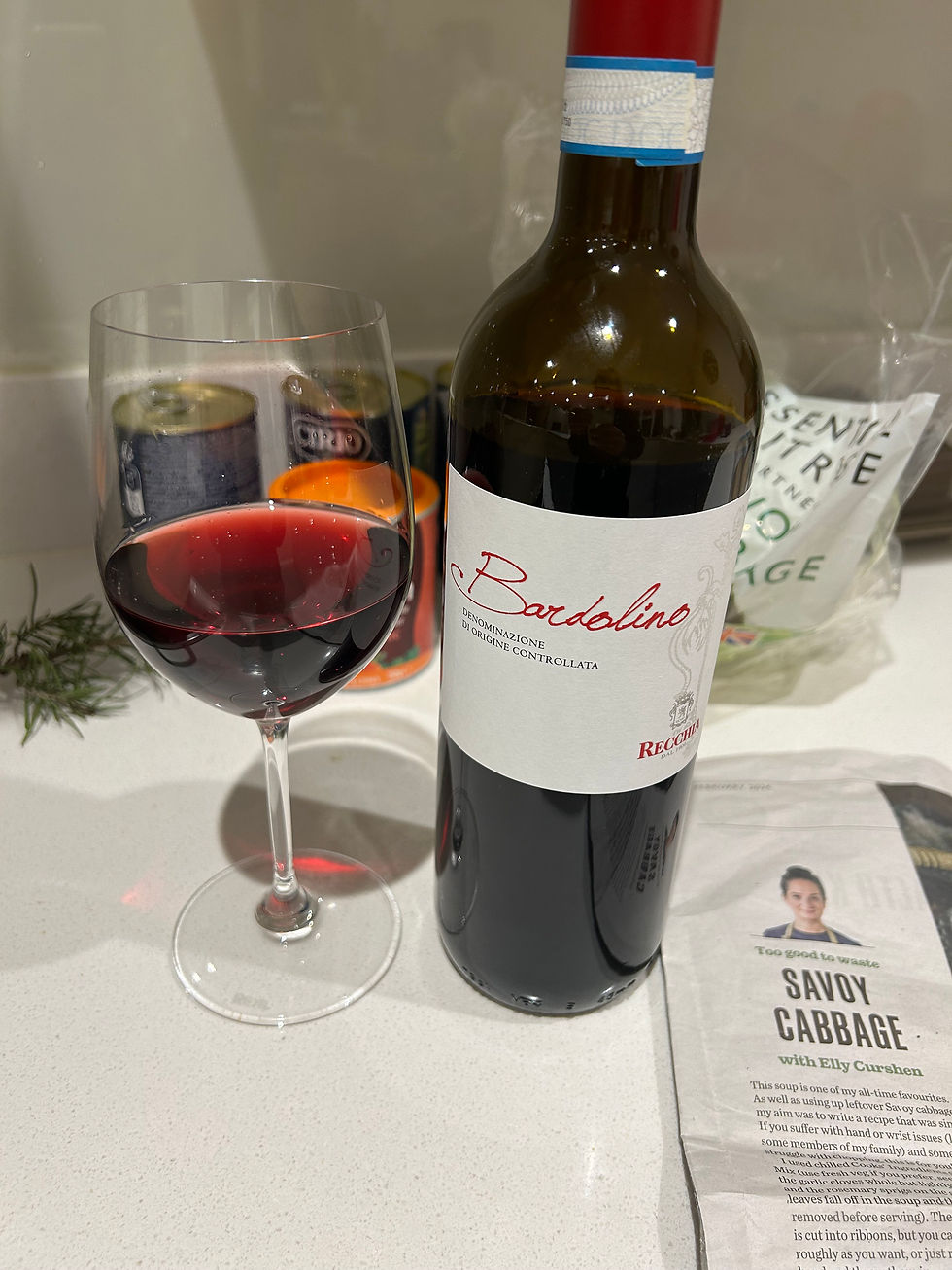
Corvina – also known as Corvina Veronese and Cruina – is one of Italy’s many indigenous grape varieties. Hailing from the Veneto region in the northeast of the country, this late-ripening, thick-skinned grape generally makes light-to-medium bodied red wine with low-to-medium tannins and high acidity. It’s a very versatile grape, which produces a wide variety of wines influenced by the different climates and soils of the area. There are light-bodied Valpolicellas and Bardolinos, full-bodied Amarones - and let’s not forget the sweet Recioto della Valpolicella. Whilst it is most famous for the aforementioned blends, Corvina also produces single varietal wines.
Valpolicella DOC – Corvina
Valpolicella (meaning 'the valley of many cellars') is an area in the province of Verona in the Veneto. Corvina dominates the blend for Valpolicella DOC, and by law must constitute 45-95% of its make up (although Corvinone can substitute up to 50% of the Corvina). The local varieties of Rondinella and - to a lesser extent - Molinara are the other varieties included and a few other grapes are also permitted. This is a generally light-bodied, fruity (tart cherry, raspberry) and not hugely complex wine. It is a real easy drinker that's intended to be drunk young. A great accompaniment to pizza and pasta dishes.
Valpolicella Classico DOC and Valpolicella Superiore DOC

Valpolicella Classico comes from a smaller, hillier area within Valpolicella; it is the historic centre and usually the best area of production. The Corvina grown here produces fuller-bodied wines with more complexity than a Valpolicella DOC.
A Valpolicella Superiore must be aged for at least one year before release and have one percent higher minimum alcohol content than a regular Valpolicella DOC. Both Valpolicella DOC and Valpolicella Classico DOC can be 'Superiore'.
Read notes on the Brolo Dei Giusti 2015 Valpolicella DOC Superiore here
Read notes on the ILatium Morini Valpolicella DOC Superiore here.
Valpolicella Ripasso

Ripasso (meaning go over again/repass) is a winemaking technique from the Valpolicella area where the leftover skins from Amarone production (see below about Amarone della Valpolicella DOCG) are added to a basic Valpolicella and the wine undergoes a second fermentation. The wine is literally “ripassato” over the skins and this results in a more full-bodied concentrated wine with greater complexity. This is why it is sometimes referred to as 'Baby Amarone.'
Read notes on the Torre del Falasco Valpolicella Ripasso Superiore here.
Read notes on the Recchia Valpolicella Classico Superiore here.
Amarone della Valpolicella DOCG – Corvina

This really is the daddy. The blend again must consist of 45–95% Corvina and/or Corvinone and the grapes must come from the Valpolicella area. However, unlike Valpolicella, it is made using the appassimento method, which is very popular in the Veneto region. Corvina’s thick skin makes it ideal for drying, and appassimento involves harvesting the grapes and drying them indoors to concentrate their sugars, acids, tannins and flavours. This results in a layered, complex wine powerhouse that’s full bodied with a high alcohol content (15.5%/16% is not uncommon). However, this power does not mean the wines produced lack finesse, quite the opposite in fact in most cases.
Amarones age a minimum of two years in barrels and generally exhibit pronounced fresh red and black cherry flavours and dried fruit flavours such as raisins, figs and prunes alongside chocolate notes. They can smell slightly sweet on the nose, but don't be fooled this is a dry wine on the palate. It is a very different expression of Corvina.
Amarones have great aging potential.
Read: Top-scoring Amarones: 95+ point wines to seek out Bardolino DOC – Corvina

Bardolino situated on the southeastern shores of Lake Garda is a mere 25 minute drive from Valpolicella. Here the Corvina grape is again blended principally with Rondinella and Molinara. Corvina must constitute 35 to 80 percent, and up to 15% of the blend can include any combination of Barbera, Rossignola, Sangiovese, Marzemino and Garganega. It produces a light and fruity red wine (cherries, strawberries, raspberries), which is high in acidity and low in tannins, and draws comparisons with Beaujolais. In fact there is a Bardolino Novello, which uses the same carbonic maceration technique as Beaujolais Nouveau.
Bardolino is lighter than Valpolicella as it contains less Corvina. It is a great summer red option, which can accompany many dishes that would usually be served with white wine.
Read notes on the Recchia Bardolino 2022 here.
Bardolino Classico DOC and Bardolino 'Superiore' DOCG
The most ancient production area for Bardolino just includes the comunes of Bardolino, Garda, Lazise, Affi, Costermano and Cavaion Veronese. Only Bardolino produced in these areas can bear the 'Classico' mark.
To gain Superiore DOCG status, a Bardolino must reach a minimum of 12% ABV and be aged for a minimum of one year before release. Both Bardolino DOC and Bardolino Classico can be Superiore.
Chiaretto di Bardolino
Whilst Bardolino is most known for its red wines it also produces a rosé (rosato in Italian) known as Chiaretto di Bardolino. It is in fact one of the oldest rosé producing areas in Italy and one of the most significant DOCs for rosato. Chiaretto, whose name comes from the Italian word 'chiaro' meaning light/pale has citrussy and floral notes, red fruit flavours, including the signature tart cherry note of Corvina as well as savoury hints.
-----
Corvina offers lots of variety so there's bound to be a style to suit everyone!

Comments